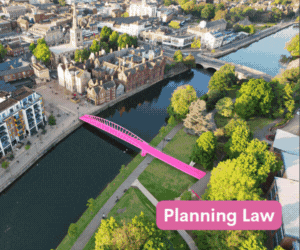Council complains about housing targets after barrister advises against ignoring standard methodology
East Hampshire District Council has called for the new Government to address "unfair and inequitable housing targets" set out by national planning policy after receiving legal advice stating that departing from the standard method for calculating housing need would risk the soundness of its local plan.
- Details
In an open letter to the Secretary of State for Local Government, Angela Rayner, the leader of the council, Cllr Richard Millard, complained that East Hampshire is disadvantaged by the fact that more than half of the district has building restrictions as it is within the South Downs National Park.
He warned that he is considering pausing the local authority's local plan, which is currently in development, in protest of the circumstances.
Millard's letter comes after the council received advice from planning law barrister Paul Brown KC of Landmark Chambers stating that, according to the National Planning Policy Framework (NPPF), any local plan that failed to meet the Government-set targets would be rejected.
In part, the council questioned whether the national park's footprint constituted "exceptional circumstances" under the NPPF.
Paragraph 61 of the NPPF, local planning authorities are expected to apply the "standard methodology" when assessing housing need within their area unless there are "exceptional circumstances".
The questions the council put to Paul Brown KC were:
- 'Is the scope of 'exceptional circumstances' limited to those circumstances relating to the inputs - i.e. to the interpretation of population, household or affordability data - of the standard method; or could it extend to other land-use planning (physical, environmental, administrative) considerations that are relevant to delivering housing needs?'
- What are the legal risks if the council departs from the standard method?
- The standard method provides a useful starting point for the local plan – considering the circumstances of East Hampshire, what evidence could justify deviating from the standard methodology?
- How high is the risk of achieving a sound plan if deviating from the standard method?
On the first question concerning the scope of exceptional circumstances, Paul Brown KC concluded that: "Even in cases where there are "exceptional circumstances", the assessment of need should be a "policy off" assessment which ignores environmental constraints such as the special protection afforded to national parks."
Consequently, the assessment of need should be limited to characteristics relating to local demography, population, affordability and market signals, he said.
He noted that this conclusion is "unaffected" by the fact that East Hampshire does not exercise planning powers within the national park.
Turning to the second question on the legal risk of departing from the standard method, Paul Brown KC said the main risk is that the Planning Inspector examining the local plan will conclude that it is not sound.
He said: "The consequences of that would depend on the extent of any consequent shortfall in housing provision: if the shortfall is small, the Inspector may conclude it could be addressed by inviting EHDC to propose additional allocations which could become the subject of a main modification.
"In those circumstances, the plan would be delayed but this would not be fatal. However, if the shortfall is significant, this could call into question EHDC's entire spatial strategy, in which case the Inspector might conclude that the problem cannot be remedied by recommending modifications, and would then be forced to conclude that the plan cannot be adopted."
The barrister also concluded that there is no "definitive guide" to the kind of evidence required to justify deviating from the standard methodology, but that it appears that "such evidence should relate to some demographic or market-based feature (such as an unusually high proportion of elderly people) which demonstrates that the assumptions which underlie the standard methodology are inappropriate".
As a result of his findings, Paul Brown KC said the risk of achieving a sound plan if deviating from the standard method was "significant".
He went further to clarify that if the departure was found to be legally flawed or unsound as a matter of policy, the implications for the emerging local plan would be 'catastrophic'.
In his open letter, Millard called for clarity on the national policy changes and mandatory housing targets that Rachel Reeves hinted at in her first speech as Chancellor of the Exchequer last week.
Reeves said the Government would consult on re-introducing mandatory housing targets to the National Planning Policy Framework, following the revision of the framework in December 2023 to label the standard method for calculating housing need an "advisory starting point".
East Hampshire's housing targets, as determined by the standard method, show the council must identify sites for almost 11,000 homes by 2040.
In his letter, Millard called for the area's housing figures for East Hampshire to be amended to account for the areas of national park land covered by the South Downs National Park Authority.
He added: "But those calculations take no account of the fact that 57 per cent of the district is inside the South Downs National Park, an area where development is restricted.
"That leaves the remaining 43 per cent of the district to take the lion's share of development.
The housing targets calculated using the standard method "do not reflect East Hampshire's geography or that a national park covers most of the district," he said.
"They do not take into account that the national park is run by a separate local planning authority, producing a separate local plan."
Adam Carey
Contracts & Procurement Lawyer
Lawyer - Property
Senior Lawyer - Contracts & Commercial
Trust Solicitor (Employment & Contract Law)
Locums
Poll









































